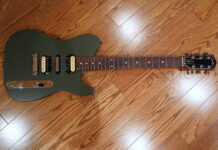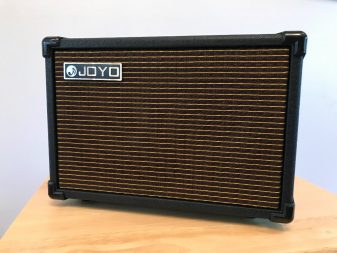 A lot of people wonder about acoustic amplifiers. Are they necessary? Why not use a regular electric guitar amp? How is it different from a PA, and why bother? All these questions are legitimate, and it might seem pointless at first. An acoustic guitar has a decent amount of volume, but it doesn’t take much to lose it when played with other, louder instruments. Take a large space and fill it out with people, and even your loud jumbo-sized acoustic won’t be completely audible to everyone in the room. There are many reasons to be looking into an acoustic amp, and the Joyo AC-20 has versatile features, and they make it an affordable solution for anyone looking to amplify their acoustic instrument.
A lot of people wonder about acoustic amplifiers. Are they necessary? Why not use a regular electric guitar amp? How is it different from a PA, and why bother? All these questions are legitimate, and it might seem pointless at first. An acoustic guitar has a decent amount of volume, but it doesn’t take much to lose it when played with other, louder instruments. Take a large space and fill it out with people, and even your loud jumbo-sized acoustic won’t be completely audible to everyone in the room. There are many reasons to be looking into an acoustic amp, and the Joyo AC-20 has versatile features, and they make it an affordable solution for anyone looking to amplify their acoustic instrument.
I filmed some sound examples to give you an idea of what it’s capable of. I’ve also recorded my initial impression of the unit.
Why not an electric guitar amplifier?
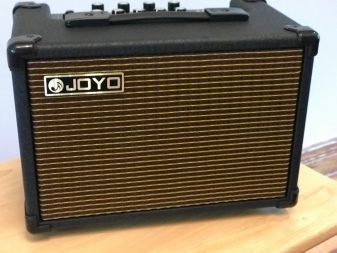 You might wonder why you need an acoustic version of an amplifier and not just a regular guitar amp. The main thing to understand here is that electric amplifiers heavily colour the sound to reproduce the electric tones we know and love. Even when you are playing on a very clean setting, the preamp, power amp, and speakers (all different parts of the unit) work together to add character to the relatively anemic signal that comes out of your cable. If you’ve ever tried plugging your electric directly into a DI and listening to what comes out, you’ll know what I mean. Things are even more transformed with the addition of gain and clipping in the components.
You might wonder why you need an acoustic version of an amplifier and not just a regular guitar amp. The main thing to understand here is that electric amplifiers heavily colour the sound to reproduce the electric tones we know and love. Even when you are playing on a very clean setting, the preamp, power amp, and speakers (all different parts of the unit) work together to add character to the relatively anemic signal that comes out of your cable. If you’ve ever tried plugging your electric directly into a DI and listening to what comes out, you’ll know what I mean. Things are even more transformed with the addition of gain and clipping in the components.
Acoustic instruments are enjoyed by everyone for their natural, rich tones. This is why acoustic amplifiers exist; they simply reproduce the signal as well as they can. Speakers are full range to reproduce the entirety of the instrument’s sonic spectrum. This also means you can plug in any acoustic style instrument without colouring the signal as an electric guitar amplifier would. I’m thinking of mandolins, banjos, ukuleles, and the like. Effects are often added to enhance the playing and listening experience for the guitarist and the audience as well.
This is very similar to what a PA system does. You could think of an acoustic amplifier as a mini, portable PA system for your guitar. You won’t need stands, power amplifiers, and a console to make it work. It’s a much more manageable and convenient package.
Great features in a small package
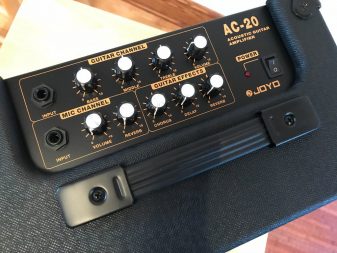 The AC-20 is, first of all, very compact. This means you won’t have any trouble finding a place to set it or to store it. It has some weight to it, but nothing unmanageable. There’s a pair of 10W speakers, bringing the total power to 20 Watts—hence the 20 in AC-20. Both speakers are 5 inches in diameter. It has a very nice brown grill cloth, giving it a nice appearance. It also has a vintage feel, all while being unique.
The AC-20 is, first of all, very compact. This means you won’t have any trouble finding a place to set it or to store it. It has some weight to it, but nothing unmanageable. There’s a pair of 10W speakers, bringing the total power to 20 Watts—hence the 20 in AC-20. Both speakers are 5 inches in diameter. It has a very nice brown grill cloth, giving it a nice appearance. It also has a vintage feel, all while being unique.
There are two channels available. The first one is the guitar channel, which features a three band EQ and a volume knob. The second is intended for a microphone. It has a ¼ inch jack, which is unusual considering that most microphones are connected with XLR cables. Controls include a volume knob and a reverb, which is definitely a nice addition.
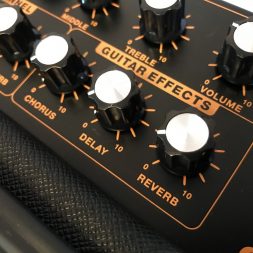 The effects section can send chorus, delay, and reverb to the guitar channel. Those three choices are probably the most used effects by acoustic players. All three of the effects are independent, with their own control knobs. Usually acoustic amplifiers will only let you set a single effect at a time, so this is good news for those who like to experiment.
The effects section can send chorus, delay, and reverb to the guitar channel. Those three choices are probably the most used effects by acoustic players. All three of the effects are independent, with their own control knobs. Usually acoustic amplifiers will only let you set a single effect at a time, so this is good news for those who like to experiment.
There is an auxiliary input on the back panel of the unit. This will enable you to jam with your favourite recordings, or let you play with backing tracks as a one-person show. It is a 1/8th connector. The amplifier comes with a power adapter to plug it in the wall. Unfortunately, it cannot be powered by batteries. That is a shame, because this size of amplifier usually has that possibility. Even its big brother, the AC-40, has that feature.
Powerful amplification and settings
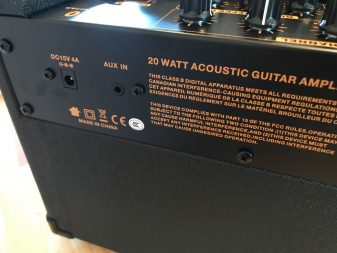 It’s very easy to dial in the AC-20. It’s largely due to the powerful EQ section. With a flat setting on my guitar’s electronics, it was easy for me to get a booming, thunderous tone or dial back the bass to get a more intimate, singing sound. Thanks to the mid control, it’s possible to enhance the character of an instrument without affecting any low end or top sparkle.
It’s very easy to dial in the AC-20. It’s largely due to the powerful EQ section. With a flat setting on my guitar’s electronics, it was easy for me to get a booming, thunderous tone or dial back the bass to get a more intimate, singing sound. Thanks to the mid control, it’s possible to enhance the character of an instrument without affecting any low end or top sparkle.
I have to say that the effects section really surprised me. At first, I thought it was awesome to have separate controls for each one of them. But the problem lies in the fact that even at minimal settings, they are very present and mixed in very loudly. At the beginning of the video, I’m playing with a minimal amount of chorus and delay on the dial, but it sounds like I’m going for an extremely wet sound. For my taste, it’s too much, and I wouldn’t be comfortable playing with such an amount of effects in most situations. I think I’d resort to using outboard effects.
Awesome tool for various situations
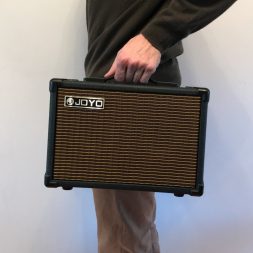 I’ve always liked acoustic amplifiers because they really put the emphasis on your playing and really help you practise. Everything is brought louder, and it’s easier to see where you need to put in some work. The AC-20 absolutely offers you the opportunity to hear yourself in this fashion. Also, singer songwriters will benefit from having a dependable tool that has a microphone input to work on their craft and material.
I’ve always liked acoustic amplifiers because they really put the emphasis on your playing and really help you practise. Everything is brought louder, and it’s easier to see where you need to put in some work. The AC-20 absolutely offers you the opportunity to hear yourself in this fashion. Also, singer songwriters will benefit from having a dependable tool that has a microphone input to work on their craft and material.
You can also use this unit to perform in small settings. It will help with playing and keeping up with other instruments, such as percussion and piano. While the volume is nice and loud, it may have trouble covering bigger rooms—especially if they are filled with people.
Check out the AC-20 and other Joyo products on Best Buy’s website (as well as my review of the Joyo MA-10A Acoustic Guitar Amplifier).

